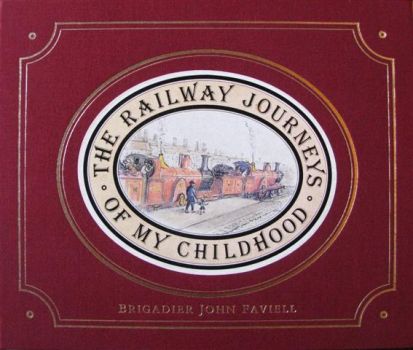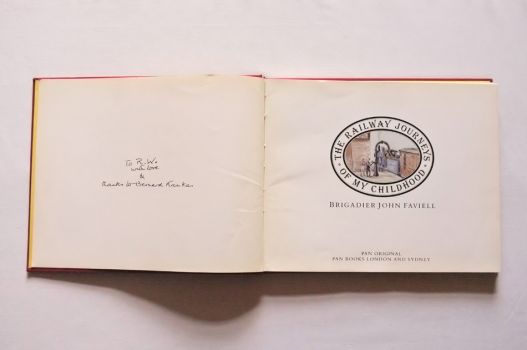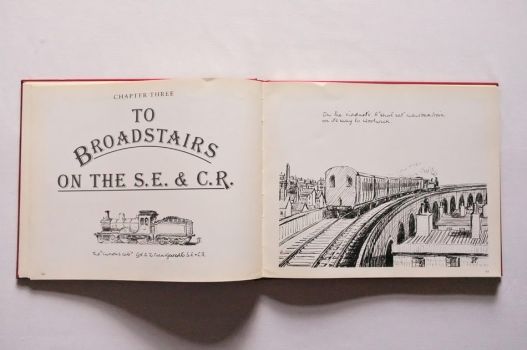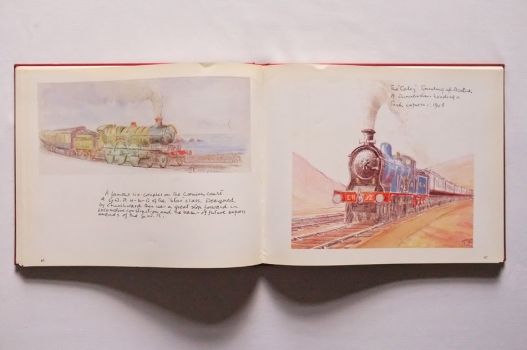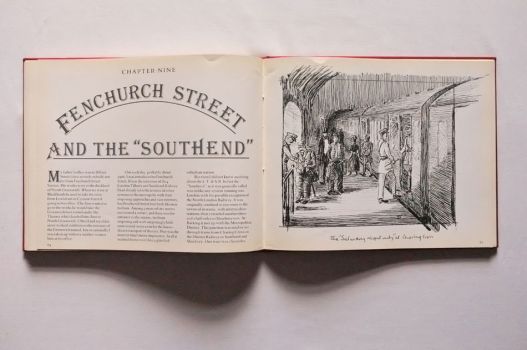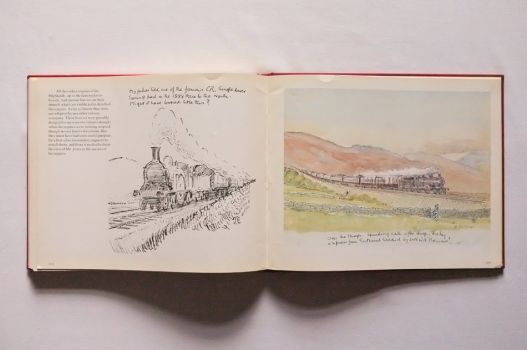The Railway Journeys of my Childhood
By Brigadier John Faviell
£15.95
With youthful excitement and passion, Brigadier John Faviell shares his vivid childhood memories of railways in the Edwardian era. The book is filled with personal anecdotes and beautifully illustrated with annotated watercolours and sketches. Drawn for his grandchildren (and their children), these watercolours and black and white sketches recall the Edwardian railways in painstaking detail: the platforms, people, fashions and, most importantly, steam engines.
Dispatched next day with Royal Mail 2nd Class
- RRP: £15.95
- Format: 212 x 264 mm (8 1/3 x 10 2/5 in) landscape
- Pages: 112
- Weight: 1.5 kg (3.3 lb)
- Pictures: 70 b/w, 30 colour
- Binding: Hardback no jacket
- ISBN: 978-0-330-28179-9
- Publication: 1983
Brigadier John Faviell was born in 1898, in the last years of the steam railways. The Railway Journeys Of My Childhood is a remarkable testament to that age, reaching from a first trip on a Great Western Railway main-line train, ‘with the glamour of departure from the express platform at Paddington’, to the early days of the Tube, ‘filthy with the dirt and fumes of the smoky tunnels and also apparently flea-ridden’. Faviell, whose family worked on the railways for generations, recalls it all.
Introduction
Long, Long Ago
A Visit to Some London Termini
To Broadstairs on the S. E. & C. R.
To Bath on the G. W. R.
Royston, the G. N. R. and a Lifelike Model Railway
About Express Engines and Rolling Stock of the Period
Kelsale Place the G. E. R.
Fond Acquaintance with the L. S. W. R.
Fenchurch Street and the “Southend”
To Cheltenham by Slip Carriage
From Rugeley by L. N. W. R.
Tales of the Highlands
A Farewell on the M. & S. W. J.
Index
Brigadier John Faviellwas born in Blackheath in 1898 and died in Kent in 1984. He had a distinguished military career that spanned both World Wars. Following his education at Cheltenham College and the Royal Military Academy at Woolwich, he was commissioned into the Royal Field Artillery in 1916 and served on the Western Front, where he was wounded and mentioned in dispatches.
After the war he spent some time in Ireland during The Troubles and then three years in India, followed by two years at the Staff College at Camberley. He was in Palestine during the Arab rebellion of 1936 where he was wounded and won the Military Cross. In the Second World War he served with the 9th Highland Division and later was appointed to a senior post at the War Office.
In 1942, John Faviell married the widow of Sir Alec Russell. He was awarded the O. B. E. in 1943, followed by the C. B. E. on his retirement in 1950. From 1951 to 1959 he was the Defence Advisor to the Conservative Research Department.
INTRODUCTION
Many railway enthusiasts look back to the reign of King Edward as the heyday of steam. Be that as it may, those years still provide me with extraordinarily vivid memories, and it has not been difficult to recapture in words and pictures some of the rail journeys I made then.
One might say that steam railways are in the Faviell blood. For generations Faviells have been railway engineers. My great grandfather, Mark Faviell, turned from canal building to railways in the early days. There exist contracts of his and his brother’s for the “Measuring and laying of rails” as early as 1835 and 1837 in the Birmingham and Manchester districts.
My grandfather, William F. Faviell, continued railway construction further afield. At the time the Indian mutiny broke out he was building the line from Bombay up the precipitous Western Ghats towards central India – a formidable task at that time. He, his wife and their three small children owed their lives to a faithful “Bearer” who warned them what was afoot in time for them to disappear into the jungle until the revolt quietened down.
TO BATH ON THE G. W. R.The train was made up of complete corridor stock, each coach with a side passage or corridor from which sliding doors led into the separate compartments. The roofs were the clerestory, square-ended type developed so early by the G. W. R. All new to me and thrilling.
But more was to come. Towards the end of the journey I was standing in the corridor when the engine whistle sounded shrilly. Shouts of “come in and shut the door”. I was hardly inside when we roared into the blackness of a tunnel. Near the village of Box this tunnel took the line deep under the Wiltshire hills to the Avon Valley and Bath. It was the famous Box Tunnel built by Brunel; when completed in 1841 it was, at 1 ¾ miles, the longest railway tunnel in the world.


